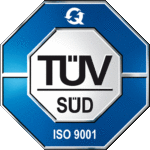The term Validation (or Confirmation) simply refers to the process of Validation of a system (process, machine or product) applicable to various fields and sectors. Furthermore, it consists of a set of activities that, through the collection of documented and objective evidence, aims to the following:
- ensuring the consistency of a process aimed at releasing a product meeting specific quality requirements
- confirming that the regulatory standards are met.
TYPES OF VALIDATIONS
There are Engineering/Mechanical Validations and Pharmaceutical Validations, which share some steps while differing in others.
Let's delve into the pharmaceutical sector as the Validation process is a prerequisite for compliance with GMP. This implies that manufacturers of machines, production lines, and plants in the pharmaceutical sector must also be able to comply with and meet these regulations.
OUR METHOD
The cGMP (Current Good Manufacturing Practice) are the Good Manufacturing Practice standards to refer to for a properly executed quality system. They indicate how to validate products and processes.
To ensure compliance of validations with cGMP, the methodological approach used by us refers to GAMP (Good Automated Manufacturing Practice), which provides a risk-based analysis (Risk Based Thinking), guaranteeing the required quality of a product.
The Validation model that we utilise is the “V” model. This involves a process of verifying the documentation of the design input (through the application of the Quality by Design concept) and then a system qualification phase through field tests.
The main purpose is to verify and ensure that the final product has the quality characteristics required by the customer.
OTHER VALIDATION SERVICES
Once the Validation Process is successfully completed, and all tests pass without any critical issues, the system is ready for deployment into production. What happens next?
Following the Validation process, it is crucial to give careful consideration to the ongoing “life cycle” management of the system. This involves maintaining continuous control and conducting regular checks even after the system is deployed into production.
The SOPs (Standard Operating Procedures) and the Validation Master Plan are essential documents designed to ensure the system's ongoing functionality and compliance with required quality standards.
Data integrity is a critical aspect of system processes. It involves verifying data (referred to as Data Integrity) to ensure that its integrity and management align with good manufacturing practices.
Through an on-site audit, we can assist you in identifying any potential risks to your systems and provide recommendations for effective risk management strategies.
Periodically, it is essential to conduct a re-validation of the system to ensure its continued integrity. This involves verifying that the system has not been compromised over time due to factors such as wear and tear, tampering, or other variables that could impact product quality. Adequate operator training is crucial in maintaining the system's reliability in this regard.
The same principle applies to Instrument Recalibration (IR), which involves recalibrating instruments over time, and to Re-qualification, which entails re-evaluating a process after a specific duration.
Hence, there is a continuous cycle of periodic qualification for both machinery and processes involved in product manufacturing, ensuring their ongoing efficiency and compliance.
ATTENTION
FDA and EMA Regulations
Validating a process, machine, or product production is a complex process that demands strict adherence to the regulations set forth by the FDA (Food and Drug Administration – US Federal Food and Drug Administration) and EMA (European Medicines Agency – European Medicines Agency). These regulatory bodies, renowned for their rigorous standards, conduct inspections to ensure compliance within the industry.
YOUR ADVANTAGES
Entrusting the production of your system Validations means you can enjoy the following advantages:












